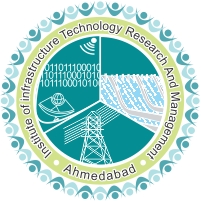Synthesis and characterization of mononuclear Zn complex, immobilized on ordered mesoporous silica and their tunable catalytic properties
Authors :- Madhu Pandey, Divya Jadav, Anu Manhas, Siddhi Kediya, Nao Tsunoji, Rajesh Kumar, Sourav Das*, Mahuya Bandyopadhyay*
Publication :- Molecular Catalysis, Volume 525, June 2022, 112365.
In this work, mononuclear zinc complex, [Zn(dmp)Cl2] (dmp = Neocuprine) was synthesized and characterized by quantum mechanical (QM) calculations using Density Functional Theory (DFT) and Time-dependent Density Functional Theory (TD-DFT) method. The UV–Vis absorption spectra of the molecule were calculated using the TD-DFT method at B3LYP functional and mix basis set (LANL2DZ and 6–31G(d)). The electronic transitions and their corresponding HOMOs and LUMOs were analysed. The characteristics such as chemical potential (, hardness value (Ƞ), softness (S), electronegativity (χ) and electrophilicity index (ω) were calculated from the HOMO-LUMO energy gap. After thorough characterization the Zn complex was incorporated to the sulfopropylsilylated ordered mesoporous silica materials via post-synthesis modification. The synthesized catalysts were characterized by powder XRD, BET, FT-IR, SEM, TGA, NMR, ICP etc., to confirm the structural integrity, presence of additional functionality, morphology of the materials and other vital parameters. After thorough characterization, all the materials were used in epoxide ring opening reaction with different amines to produce important intermediates β-amino alcohols. Gradual enhancement of catalytic activities in terms of conversion was observed from blank (without catalyst) to sulfopropylsilylated mesoporous material and finally to immobilized Zn complex incorporated hybrid ordered mesoporous materials. Zn complex incorporated MCM-48 was found to be most active in this reaction system and gave maximum 99%, 92% and 70% conversion of piperidine, morpholine and aniline respectively and 98% selectivity of the desired products.

